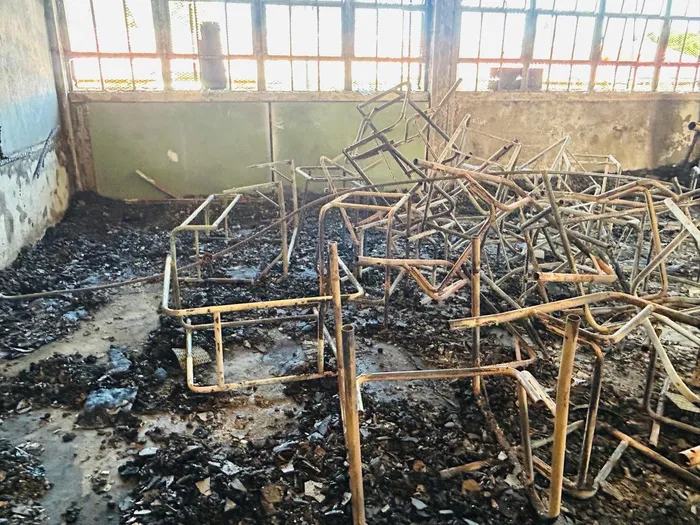Riverlea school torched, raising concerns of arson
Community grapples with aftermath

A devastating fire at Riverlea High School has destroyed 11 classrooms, affecting 230 learners and prompting urgent action from the Gauteng Department of Education.
Image: Supplied
A primary school in Riverlea, Johannesburg, was gutted by fire last week in what many residents and authorities now suspect was a deliberate act of arson. The blaze, which tore through classrooms and administrative offices late at night, has left the school unusable and the local community reeling.
Firefighters responded to the call in the early hours of Tuesday morning, but by the time the flames were brought under control, much of the school’s infrastructure had been destroyed. No injuries were reported, but the damage is extensive, leaving hundreds of learners without a place to study as the academic year continues.
As the smoke clears, disturbing allegations are emerging. According to several residents, there had been rising tensions among school staff in the months leading up to the fire. Some believe these internal conflicts could have led to the intentional destruction of the school.
“There have been arguments, power struggles, and finger-pointing among the teachers and management,” said a concerned parent, who asked to remain anonymous. “The school has not been well managed, and the community is suffering because of it.”
Others, however, say the incident speaks to a broader issue plaguing the Riverlea community—one of violence, drug abuse, and urban neglect. Once a modest working-class neighbourhood, Riverlea has seen a sharp decline in recent years, marked by frequent break-ins, gang activity, and the unchecked rise of narcotics.
“Every week, someone’s house gets broken into. Our children walk to school in fear,” said resident Busi Motloung. “Now, even the schools are burning. What future do our kids have?”
Some community members allege that the school had become a target for criminal elements, with drugs being sold near the premises and learners exposed to gang recruitment. While there is no official confirmation linking criminal networks to the fire, many believe the overall atmosphere of lawlessness contributed to the disaster.
Police have opened a case of suspected arson and are investigating all possible leads. Community policing forums and local activists are calling for the deployment of additional resources to combat the rising tide of violence and degradation in the area.
Meanwhile, parents and teachers are scrambling to find temporary learning spaces for the displaced students. Many fear the trauma and disruption will have long-term consequences on the children’s education and mental well-being.
“This is more than just a fire,” said a local youth worker. “It’s a cry for help from a community that’s been neglected for too long.”